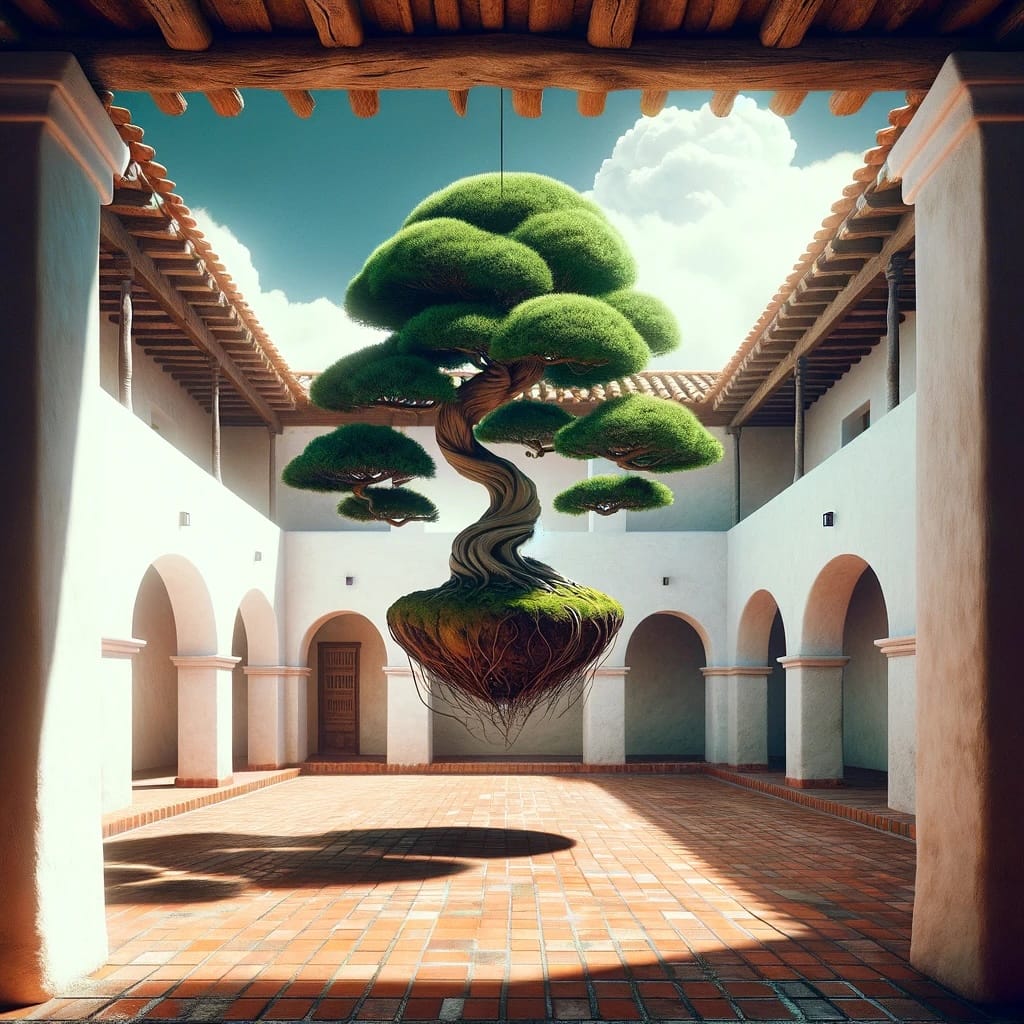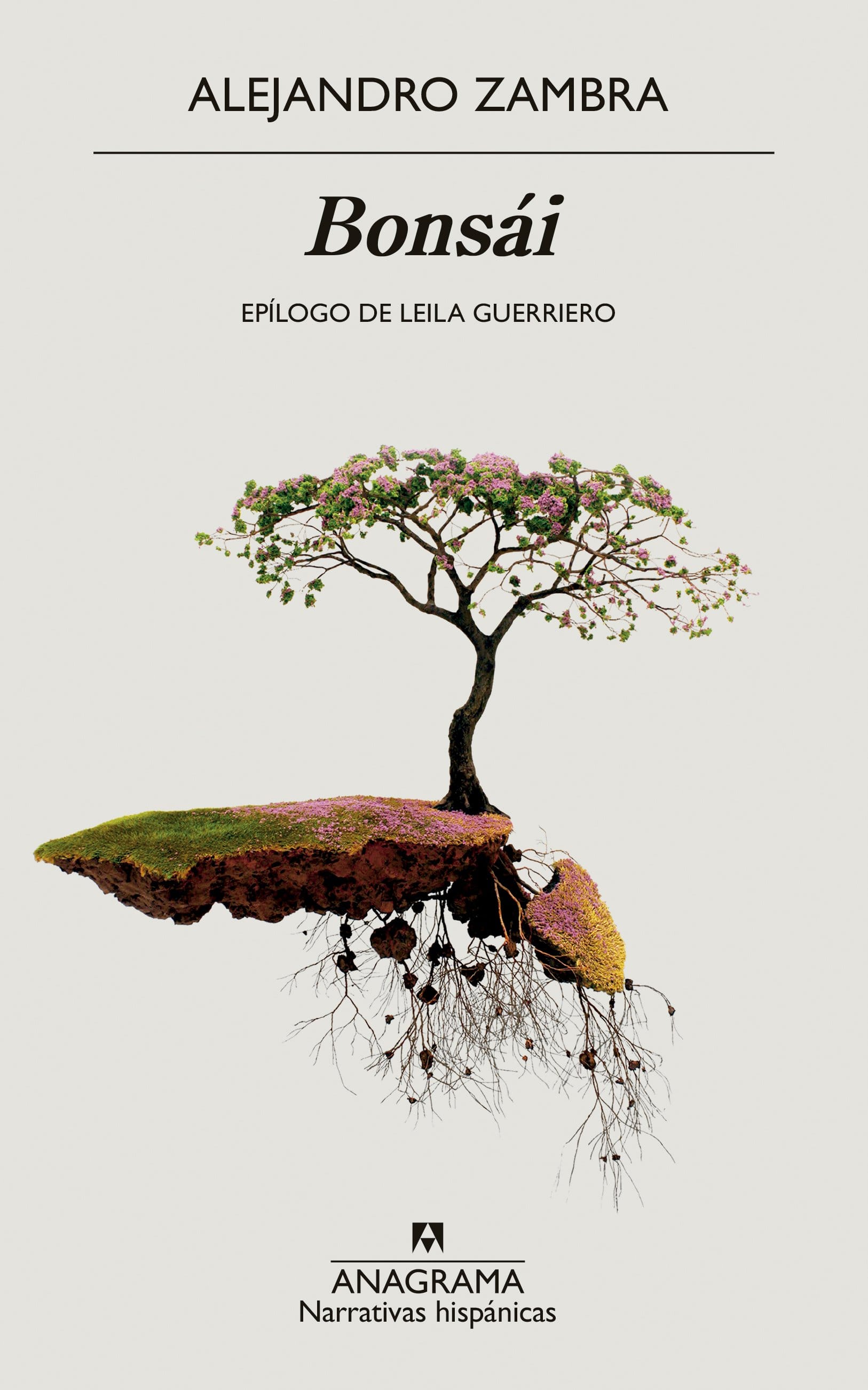Notes: Lessons from a Rebel Bonsai Master
Serendipity in Santiago: Discovering Synchronicity in a Hidden Garden and Alejandro Zambra's 'Bonsai

I meandered into a small courtyard nestled in a colonial plaza branching off from the main square in Los Dominicos, Santiago.
An ornate but fading arch marked the threshold, leading into a plaza adorned with terracotta tiles.
To my surprise, I found a bonsai garden in the old Spanish plaza, a soft and unexpected juxtaposition.
A whisper of trickling water echoed from a fountain somewhere unseen. A gentle breeze rolled in, carrying with it the summer's soft light and the subtle scent of dust. Miniature cedars and assorted bonsai stood proudly in various Asian-style pots.
This bonsai garden, nestled within the tranquil plaza and further enveloped by the larger structure of the building, stood as a serene, Russian-doll-like oasis of calm. It marked a stark contrast to the bustling layers of city life outside. The fusion of the delicate forms of the bonsai, embodying the essence of Asian aesthetics and philosophy, stood in harmonious balance with the bold and grandiose elements of the Spanish plaza.
I noticed a figure snipping with shears, working on a little tree in the corner of the square. As I observed the forms, I struck up a conversation with the maestro.
"Could you tell me more about this bonsai garden?" I asked.
The bonsai maestro, tending to his artworks, responded without shifting his focus, shadowed perhaps by a larger history and practice. "I don't bind with wires; I listen, trim, and wait. Since I never really force plants to my will, I’m not popular with other bonsai enthusiasts. They don’t consider what I do to be true bonsai.”
In the midst of our conversation, noting the serendipity, my mind wandered back to a line from Alejandro Zambra's "Bonsai" that had resonated deeply with me the previous night:
“Once outside its flowerpot, the tree ceases to be a bonsai."
Not sure what to make of that line then, I found it strangely coincidental to be standing here in a bonsai garden, listening to this maestro continue. I thought maybe he would explain:
“In my garden, each tree tells its own story. I cannot impose my will on these plants. Instead, I listen to them. See this cedar? It grew in its own way, in a pot that matches its needs, not just for aesthetics but for its health. Many don’t agree with my methods, but I believe bonsai is more than just shaping trees—it's about understanding and respecting them, letting their natural beauty and character shine through. Here, see, it's not just about creating a miniature tree; it's about nurturing and preserving the essence of the tree itself.”
“Once outside its flowerpot, the tree ceases to be a bonsai." I pondered again.
Surrounded by these living little forms of beauty born from limitation, the words resonated more deeply. I reflected for a moment on how the environment had meticulously shaped my identity, much like the bonsais in their pots. The trees, with their twisted trunks and sparse, strategically pruned leaves, stood as a testament to the complex dance between freedom and restriction, growth and containment. As the whisper of the wind rustled through the leaves, I pondered the delicate balance of nurturing one's roots while yearning for the sky, realizing that sometimes, the very constraints that seem to bind us are what create our unique beauty and strength.
The maestro, realizing my interest, walked me through his garden, pointing out the age of various plants. As we talked, he showed me that his bonsai were reflections of life. They were lessons in creativity, in finding harmony, not through control but through understanding and adapting to the natural rhythm of existence.
I took away the revelations, the man’s deeply personal approach, and the intention to find harmony with his craft. Maybe he had a lesson to reflect on the larger “rules” on how to approach creativity and life in general.
"Creativity isn't about rigidly adhering to rules or conventional methods," he noted. "It's about nurturing ideas, allowing them to grow and find their own form. Just as with these bonsai trees, respecting their natural essence will resonate with beauty and fulfillment. In guiding projects with a gentle hand, allow them to unfold in their own time and way. Approach them like life, less about controlling and more about harmonizing with the natural flow of things. That's the dance between form and freedom."
Thanking the maestro for his time and passion, I later returned home, flipping again through Zambra’s novel 'Bonsai'. I found the following quote that echoed:
‘What's the purpose of meeting someone if they don't change your life?’
The bonsai, the maestro, the plaza, Zambra’s 'Bonsai' – maybe this recollection will subtly shift your perspective and leave you with a lasting impression of life's transformative encounters, however small and happenstance they may at first seem.
So in summary this is a strong recommendation for the novela, 'Bonsái' by Alejandro Zambra
